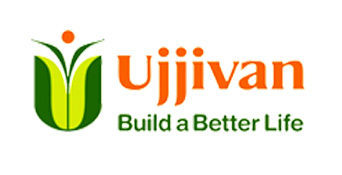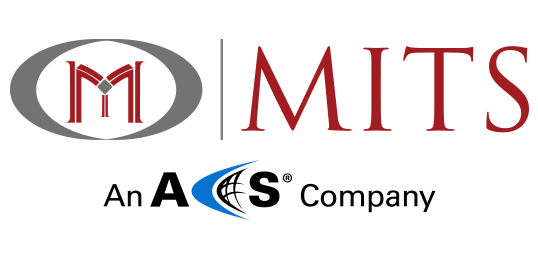Document Management System
Document Management System
All Case Studies
About the Client
Ujjivan is one of the largest microfinance institutions in the country with gross managed assets of about 3,038 crores as of January 31st, 2015. It was awarded by HSBC-Access as the Best Large Microfinance Institution in India in 2011. Ujjivan operates primarily on a joint liability group lending model, as an adaptation of the famed Grameen model of microfinance. In addition, it boasts of a cutting edge, yet cost effective technology infrastructure, which continues to be ahead of time in the microfinance industry.
With a large network of 423 branches across the country in 21 states and 3 union territories, Ujjivan has the largest geographical footprint among MFIs. Ujjivan has never operated in Andhra Pradesh. It has positively impacted the lives of more than 2 million unbanked and under-banked customers in urban, semi-urban and rural areas, by addressing the financial needs for micro enterprise, home improvement, education & emergencies. Ujjivan’s operations are backed by its customer-centric focus on service and product innovation, technology enabled back-end operations, independent credit appraisal process and prudent business risk management practices.
Ujjivan Financial Services Private Limited was founded in October 2005, as a pioneering microfinance institution with an objective of providing financial services to the urban poor. Mr. Samit Ghosh, the founder and Managing Director, is a career banker with over 30 years specializing in retail banking. He was among leaders to launch retail banking in India with Citibank in 1985, Standard Chartered in 1993 and HDFC Bank in 1996. In 2005, he established Ujjivan after identifying the demand-supply gap in access to credit products among the urban poor, a segment which constituted a population of about 10.6 crores and the fastest growing segment of the financially excluded.
Though Ujjivan was initiated as an institution focusing on the urban poor, its customer base has expanded in time to include semi-urban and rural populations, which currently constitute a significant portion of its outstanding portfolio.
Ujjivan has achieved strong growth over the last nine years. Also, its achievements over the last 3-4 years have been attained amidst challenging market conditions, specifically the Andhra crisis. Ujjivan’s success is attributable to strong management practices, innovative products & services, strong customer relationship, robust governance model and strong risk management process.
Mission:
Provide full range of financial services to the economically active poor to build better lives.
Goals:
Provide full range of financial services required by the customers
Build an institution which is best in class in all aspects:
- customer service, innovation, efficiency, work place engagement, leadership, governance and reputation
- Operate a viable business to provide satisfactory returns for investors
- Provide professionally rewarding careers to employees and, attract and retain quality talent
- Holistically approach poverty reduction, in partnership with Parinaam Foundation, through social welfare; healthcare, education, vocational training, community development, shelter, and disaster relief, to enable customers lead a “better life”
Value & Culture :
The bank will function by the below values and emphasize on inculcating them among its stakeholders:
- Customer’s choice institution
- Integrity in all dealings
- Provide Responsible Finance
- Fair with suppliers & service partner
- Compliance of laws, regulations & code of conduct
- Best Place to Work
- Professional & Teamwork
- Provide satisfactory return to investors Respected in the community
Business Need
Document management solution for Ujjivan.
The IBM FileNet P8 platform acts as the back bone of this solution. This solution is scalable and extendable for the future enterprise wide content management requirement. It provides the core components around which Workflow, Document Management, Records Management, Email Management components can be added. They had implemented Document Management system across India.
- No change in the existing way of working of business
- User Training and documentation of the system will be provided
Ujjivan has focused Individual Business loans
Detailed Analysis
The high level objectives of the Ujjivan are to deliver end to end operational and process excellence enhancing the existing business process through e-document management and storage capabilities across the organization. A few shortcoming of the current implementation are listed below.
- Scalability and volume processing
- Availability of multiple vendor options for support 24/7
- Ability to scale to a higher volume and increased number of concurrent transactions
- Improved business recovery capability for higher volumes
- Ability to easily share “paper based” documents across the organizations
- The proposed system should help Ujjivan in achieving the aforementioned objectives.
- They focused mobile solution
- More features will be available at branches itself
- Scanning at branch level
This solution is scalable and extendable for the future enterprise wide content management requirement. It provides the core components around which Records Management, Email Management components can be added.
Industry
There were many microfinance institutions active in rural India, but very few served India’s urban population. To bridge this gap, Ujjivan focused on the urban poor. This is a fast growing segment that is relatively new to India’s microfinance industry. Ujjivan surveys and interaction with the urban poor show that they are exposed to enormous contingencies and are required to share their meager resources with neighbors, friends, relatives and colleagues. Hence, there is a tremendous amount of bonding and affinity among them. We have also found that, contrary to popular belief, the urban poor are a stable population. Therefore, the significant difference between the urban and rural population is the lack of time and availability of space in cities.
Key influential factors
Document Management System adding great momentum to reduction in Turnaround Time (TAT) with multi layer processing with an excellent system of content, workflow and process management. Further it also facilitated productivity measurement leading to improved turnaround time
Existing System:
Existing Automation of Document Management at RO/HO:
The branch office verifies the documents (Customer profile/Loan Applications) and then creates a Customer profile/Loan Request entries into the Core Banking System (ERP) and then writes the Profile ID/Loan ID on to the physical documents and then send them through courier to RO.
The branch office verifies the documents (Customer profile/Loan Applications) and then creates a Customer profile/Loan Request entries into the Core Banking System (ERP) and then writes the Profile ID/Loan ID on to the physical documents and then send them through courier to RO.
- RO will receive the Request for processing the application forms from Branch office by Courier
- On receipt of application they will be sorted, aligned and arranged to process
- The preparatory task for scanning will have the following activities
- This is a manual step where the user (scanning desk) creates a batch and loads it on the scanner for scanning. The staples would be removed and the pages would be arranged to have the correct alignment to facilitate scanning.
- The documents will then be scanned and batches will be formed.
- After the batch creation a QA step will be performed to check and verify the images being scanned.
- An initial indexing will be performed on the batch. This initial indexing will gather the following information
- Branch Information
- Center Information
- Group Information
- The scanned documents will be saved into the content repository.
- The application will then be forwarded for the data entry. The data entry will be performed at the outsourced vendor location.
- The outsourced vendor will have the access to the centralized Core Banking
- The data entry can either be performed against the Core Banking application or through the workflow application.
- The Approver logs into the DMS and verifies the documents for approval (ex.Credit Authorization).
- The approver will perform the cross verification and validation with the Core banking system and/or content repository.
- If there are any inconsistencies in the application, the same will be forwarded to the helpdesk for clarifications and/or corrections.
- After the helpdesk personnel resolves the inconsistency in the application, it moves back to the analyst. He may then accept or reject the application. In this case the documents are removed/ added into the DMS repository based on authorization.
- The analyst may accept or reject the application or refer to his manager for approval. Accordingly update the status into the DMS.
- If the request is referred to the manager (ex. RO/COO), he will either accept or reject the application.
- On acceptance of the application from the respective department, the application is forwarded to final authorization department (ex.Sanctioning/Booking).
- The user can annotate on the scanned documents.
Existing Content Classification (Folder Structure) for DMS
The content classifications for FileNet Content repository would be finalized after detailed analysis form R2K and confirmation by the Ujjivan team. The proposed FileNet content repository and the content classification for jjivan’s all departments would resemble as depicted in the below figure 2.4. The DMS implementation has been envisaged for the following departments viz.
- Operation Department
- Administration Department
- Finance/Accounts Department
- HR Department
- IT Department

Our Solution:
System Upgrade Approach and System Configuration

The scope of the upgrade includes the following:
- Installation, configuration and upgrade of all IBM FileNet P8 software only
- Migration of all the documents stored in current Content Engine 4.5.x Object Stores to the new Content Engine 5.2.x Object Stores
- Installation and configuration of new IBM FileNet 5.2 UAT and Production Environment.
- Modification of API’s for the existing WMS, Relaunch, Error Tracking applications.
- The proposed approach for the upgrade provides real time and intermediary mode for migration and includes many features as part of best practices for upgrade
- The High Level Approach is as follows:
- Backup of existing FileNet settings and configurations.
- New VM’s will be created for the new version of FileNet software versions.
- Backed up data will be restored to the new environment for the upgrade process.
- Upon UAT Sign off, the system will be cut over to Production.
Proposed Ujjivan Deployment Architecture
The below mentioned diagram illustrate the Ujjivan BPM Solution architecture and the deployment of various FileNet components on specific servers

List of Products and Services used
- IBM FileNet P8 BPM Suite 5.2
- DB2 9.7v
- .NET Framework 4.0 or above
- Java 1.6 or above
- Struts 1.x,Spring Framework
- Mozilla Fire Fox browser 29 or above
Solution Benefits
- Document retrieval speeds can be dramatically improved by storing documents on computer disks in a well-organized directory structure with an accompanying search engine
- Document storage costs can be reduced by eliminating the costs of paper, filing cabinets, and dedicated filing-section staff, and by minimizing document storage space
- Workflows can be improved for speed and qualitatively enhanced using unique EDMS facilities
- Security can be enhanced using access rights, passwords, backups, and offsite storage
Conclusions & Recommendations

